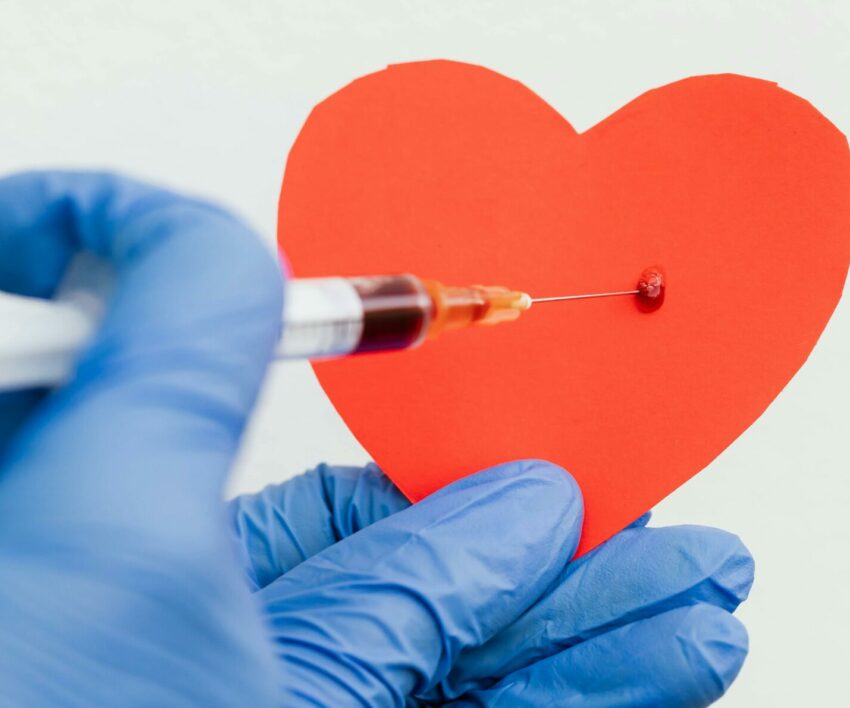pregnancy; picture: pexels
World Anaemia Day (February 13) and South Africa’s Pregnancy Awareness Week (February 10-16) both shine the light on anaemia, a global health challenge impacting many pregnant women and their newborns.
According to the World Health Organisation (WHO), anaemia affects around 40% of pregnant women globally, with even higher rates in developing regions such as South Africa, where two out of three expectant mothers have low iron levels and one in three is anaemic. This entirely preventable condition continues to be one of the most significant contributors to maternal mortality and adverse pregnancy outcomes worldwide.
Maternal anaemia is not just a pregnancy concern, it is a generational health crisis that can impact children’s development for years. However, with proper screening and treatment, adverse outcomes can be successfully prevented, explains Sister Karin Davidson of the Cape Town Infusion Centre, a facility that specialises in medical-grade iron infusions.
“Anaemia affects the entire population due to factors like poor iron absorption, poor nutrition, blood loss through menstruation and physical challenges such as illness, pregnancy, rapid growth or sport. Research shows that up to 40% of women enter pregnancy without enough iron – and it’s an entirely preventable and treatable condition,” says Sr Davidson.
Long-term impact on children
Research has shown that children born to iron-deficient or anaemic mothers often face numerous health challenges that can persist through early childhood into adulthood. “Babies store the iron they need for the first six months of their life in-utero and children born with low iron stores can take up to seven years to catch up,” Sr Davidson adds.
Issues related to infants born to iron-deficient or anaemic mothers include:
- Increased risk of premature birth and low birth weight
- Reduced physical growth and achievement of developmental milestones
- Cognitive developmental delays and differences, affecting learning ability and school performance
- Compromised immune system development, leading to higher susceptibility to infections
- Higher risk of developing anaemia themselves in early childhood
- Potential impacts on behavioural development and healthy social interaction
- Decreased energy levels affecting physical activity and participation in sports
Anaemia and pregnancy – the risks
During pregnancy, blood volume increases by approximately 50%, requiring significantly more iron to produce additional red blood cells. Without adequate iron levels, both mother and baby face serious health risks, including:
- Increased risk of maternal mortality
- Higher chances of postpartum depression
- Compromised foetal growth and development
- Greater risk of pregnancy complications
- Reduced oxygen delivery to vital organs
- Increased risk of blood transfusion during or after delivery
Detection and prevention
Early detection of iron deficiency is crucial. Pregnant women should be aware of common symptoms, including:
- Unusual fatigue and weakness
- Shortness of breath
- Dizziness or light-headedness
- Pale skin and mucous membranes
- Difficulty concentrating
- Heart palpitations
- Brain fog or poor cognitive functioning
- Pica – craving non-food substances such as ice, sand, clay
Regular blood tests during antenatal check-ups are essential for monitoring iron levels and Sr Davidson encourages pregnant patients to advocate for themselves by insisting on iron level screenings during their first pre-natal visit and again in each trimester of pregnancy.
Treatment options
A multi-faceted approach to treating maternal low iron and anaemia includes:
1. Dietary modifications
“It’s important to note that while nutritional intervention cannot raise low iron levels in an anaemic patient, consistent focus on iron-rich foods, especially in pregnancy can certainly play a part in preventing low iron levels developing in a pregnant patient,” says Sr Davidson. Increasing intake of iron-rich foods such as lean red meat, chicken and fish, dark leafy greens, legumes and iron-fortified cereal is recommended.
2. Supplementation and medical-grade iron infusions
Oral iron supplements are typically a first-line treatment, with healthcare providers prescribing appropriate dosages based on individual needs and iron store levels. For moderate to severe cases, or when oral supplements prove insufficient and when blood tests have shown low or insufficient iron stores, medical-grade iron infusions administered at a registered healthcare facility offer a highly effective solution. These infusions can rapidly restore iron levels, typically requiring only 1-2 treatments to achieve optimal results.
“Early intervention and understanding that if you are hoping to conceive then healthy iron stores are essential for both mother and child, along with awareness of concerning symptoms that are sometimes considered normal pregnancy symptoms, are key to getting appropriate support and treatment. If you’re pregnant, insist your doctor checks your levels,” Sr Davidson further mentions.
Essential checklist for pregnant women
As South Africa observes Pregnancy Awareness Week alongside World Anaemia Day, expectant mothers are urged to:
- Schedule regular antenatal check-ups
- Request an iron-level screening
- Discuss supplementation options with their healthcare providers
- Make dietary modifications to increase iron intake
- Consider iron infusions if recommended by their healthcare team
The Cape Town Infusion Centre is committed to managing iron deficiency and anaemia, empowering patients, and improving lives. Please contact them if you would like any further information.
Compiled by: liquidlingo Communications
Also see: Is your birth control increasing your risk of brain tumour?










